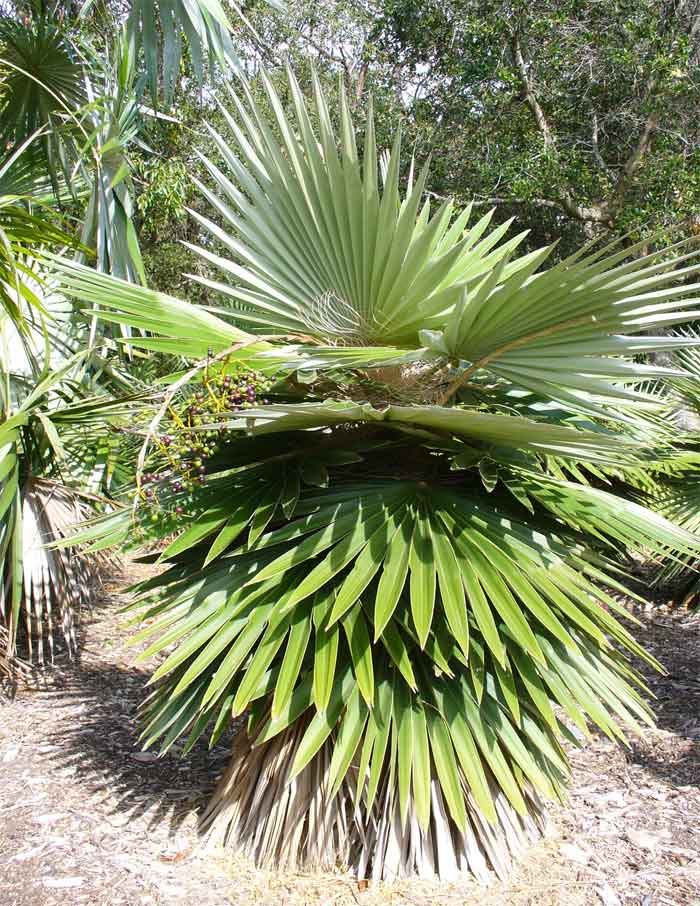
Coccothrinax borhidiana (*)
Classification System: APG IV
Superregnum: Eukaryota
Regnum: Plantae
Cladus: Angiosperms
Cladus: Monocots
Cladus: Commelinids
Ordo: Arecales
Familia: Arecaceae
Subfamilia: Coryphoideae
Tribus: Cryosophileae
Genus: Coccothrinax
Species: Coccothrinax borhidiana
Name
Coccothrinax borhidiana O.Muñiz, 1978
Distribution
Native distribution areas:
Continental: Southern America
Regional: Caribbean
Cuba
References: Brummitt, R.K. 2001. TDWG – World Geographical Scheme for Recording Plant Distributions, 2nd Edition
References
Muñiz, O., 1978. Acta Agron. Acad. Sci. Hung. 27: 437
Links
Govaerts, R. et al. 2018. Coccothrinax borhidiana in Kew Science Plants of the World online. The Board of Trustees of the Royal Botanic Gardens, Kew. Published online. Accessed: 2018 Dec. 16. Reference page.
International Plant Names Index. 2018. Coccothrinax borhidiana. Published online. Accessed: Dec. 16 2018.
The Plant List 2013. Coccothrinax borhidiana in The Plant List Version 1.1. Published online. Accessed: 2018 Dec. 16.
Tropicos.org 2018. Coccothrinax borhidiana. Missouri Botanical Garden. Published online. Accessed: 16 Dec. 2018.
IUCN: Coccothrinax borhidiana Muniz (Critically Endangered)
Links
Govaerts, R. et al. 2018. Coccothrinax borhidiana in Kew Science Plants of the World online. The Board of Trustees of the Royal Botanic Gardens, Kew. Published online. Accessed: 2018 Dec. 16. Reference page.
International Plant Names Index. 2018. Coccothrinax borhidiana. Published online. Accessed: Dec. 16 2018.
The Plant List 2013. Coccothrinax borhidiana in The Plant List Version 1.1. Published online. Accessed: 2018 Dec. 16.
Tropicos.org 2018. Coccothrinax borhidiana. Missouri Botanical Garden. Published online. Accessed: 16 Dec. 2018.
Vernacular names
English: Guano, Borhidi's guano palm
Coccothrinax borhidiana (guano,[2] Borhidi's guano palm)[3] is a palm which is endemic to Matanzas Province in Cuba.[4] Like other members of the genus, C. borhidiana is a fan palm.
Coccothrinax borhidiana is restricted to an area of less than 10 km2 on raised limestone beaches near the sea and is threatened by development and livestock grazing.[1]
It was named after Attila Borhidi, Hungarian botanist.
References
Moya, C. (1998). "Coccothrinax borhidiana". IUCN Red List of Threatened Species. 1998: e.T38478A10115507. doi:10.2305/IUCN.UK.1998.RLTS.T38478A10115507.en. Retrieved 19 November 2021.
Henderson, Andrew; Galeano, Gloria; Bernal, Rodrigo (1995). Field Guide to the Palms of the Americas. Princeton, New Jersey: Princeton University Press. p. 48. ISBN 0-691-08537-4.
"Coccothrinax borhidiana". Palm & Cycad Societies of Australia. Retrieved 2007-11-13.
"Coccothrinax borhidiana". Royal Botanic Gardens, Kew: World Checklist of Selected Plant Families. Retrieved 2019-02-25.
Retrieved from "http://en.wikipedia.org/"
All text is available under the terms of the GNU Free Documentation License

